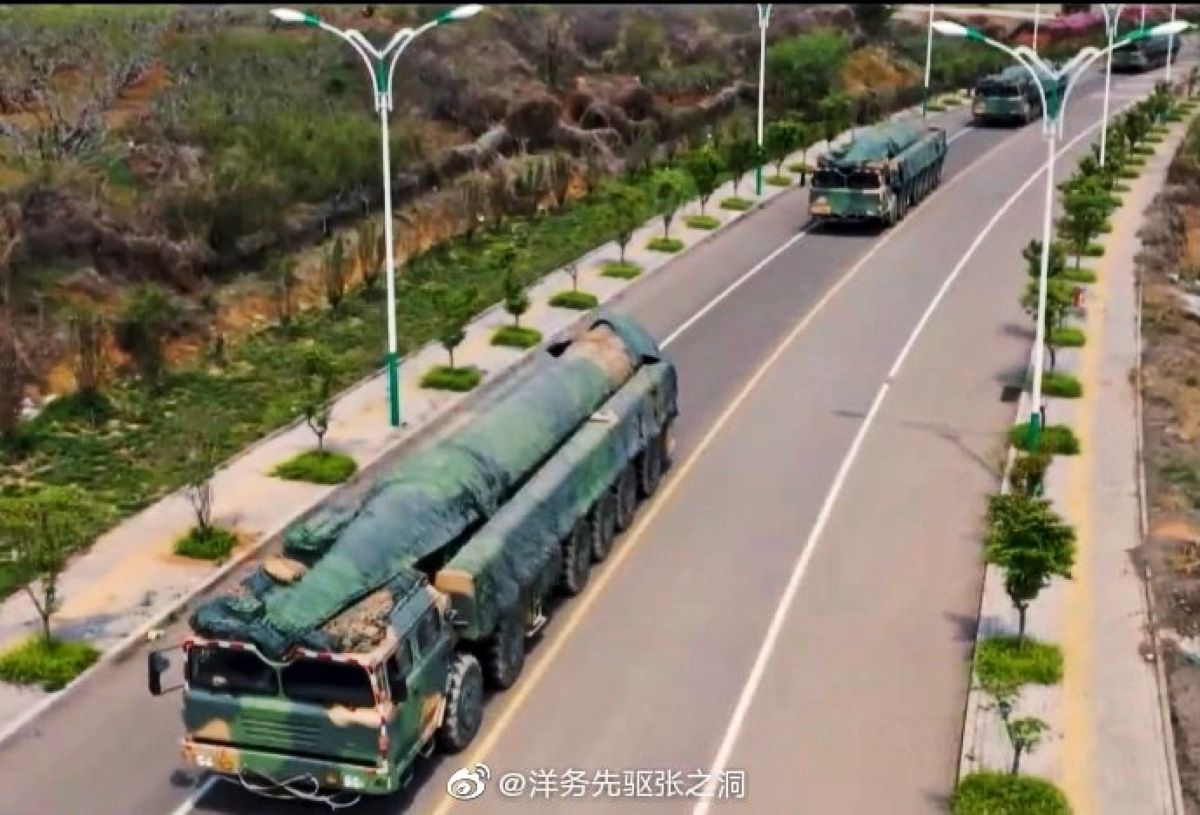The US’s efforts to close the technological gap with China and Russia in the hypersonic program have encountered another setback: the fielding of the Long Range Hypersonic Weapon System (LRHWS) has been delayed to fiscal year 2025.

According to a report published by the Government Accountability Office on June 17, the US Army Will not be able to field its first LRHW battery until fiscal 2025 due to issues with the launcher and launch sequence of the new Long Range Hypersonic Weapon System.
The LRHW is a trailer-launched, intermediate-range missile with a projected range of more than 1,700 miles. The system seeks to accomplish an incredible “hypersonic” top speed of Mach 17, or 3.6 miles per second. The LRHW also goes by the moniker, ‘Dark Eagle.’
The latest GAO report admits that the US Department of Defense (DoD) is not yet well positioned to field fast systems. However, it categorically mentions that the military intends to resolve the issues with the ambitious LRHW system and test the missile and launcher together by the end of fiscal year 2024.
“The Army missed its goal of fielding its first Long-Range Hypersonic Weapon battery — including missiles — by fiscal year 2023 due to integration challenges,” the GAO said. “Based on current test and missile production plans, the Army will not field its first complete battery until the fiscal year 2025.”
The watchdog noted that the service could encounter problems even in the event of a successful launch, pointing to a possibility of further delays. Concerns about missile performance during flight testing could cause additional delays to the program, service officials informed the GAO. Additionally, after a fielding decision, the GAO plans to have the eight missiles required for a battery available within 11 months.
The recently reported delay is not the first for the program. However, it is particularly significant given the current escalation of the hypersonic race. In September 2023, the Army acknowledged that it would not meet its original goal of fielding the first battery by the end of the fiscal year 2023.
At that time, Doug Bush, the head of Army acquisition, said, “It’s a launcher problem.” Bush also assured that the military was working on a new plan and that a potential delivery could be made within the next six months. It seems that the new plan has also not worked out well for the US.
The US Department of Defense (DoD) ‘s efforts to close the hypersonic gap with China and Russia face a significant setback as the schedule to field the weapon has been constantly pushed further.
Since 2021, the LRHW has seen multiple test failures, some ascribed to missile malfunctions. The GAO noted issues with the launcher and launch sequence resulted in the cancellation of two tests in 2023.
While China and Russia have fielded multiple hypersonic weapons, the US hypersonic dream keeps slipping away due to technological hurdles. For instance, the US Air Force (USAF) had to officially cancel the AGM-183A Air-launched Rapid Response Weapon (ARRW) program after a spate of unsuccessful tests. The USAF has placed significant emphasis on developing the Hypersonic Attack Cruise Missile (HACM), yet the weapon is far from deployment.
In June 2022, the Navy conducted the test launch of an Intermediate-Range Conventional Prompt Strike (IRCPS) missile at the Pacific Missile Range Facility. The projectile experienced an in-flight anomaly affecting data collection for specific flight segments. However, the US Navy swiftly pinpointed the problem’s source and implemented corrective action, as detailed in the Pentagon’s Office of Test and Evaluation (DOT&E) report. The fielding, nonetheless, is running behind schedule.
Currently, the US Navy is developing the Hypersonic Air-Launched Offensive Anti-Surface Warfare (HALO) program that will advance its maritime strike capabilities by providing air-launched hypersonic anti-ship cruise missiles to surface and subsurface fleets. The weapon is expected to be ready only by 2029.

The primary US adversary in the world, China, has arguably emerged as the world leader in hypersonic capabilities. At least two additional hypersonic weapons emerged in the last year—the DF-27 and an air-launched variant of the YJ-21—respectively. Meanwhile, Russia has already used two of its hypersonic weapons—the Kinzhal and Zircon—in combat against the Ukrainian forces.
Incidentally, even countries that are considered rogue, like Iran and North Korea, are alleged to have operational hypersonic weapons, whereas a military powerhouse like the United States does not.
The recent GAO report paints a grim picture since the Dark Eagle was intended to become the first hypersonic weapon in the US Army’s arsenal. Army spokeswoman Ellen Lovett said on June 17 that “for operational security reasons, we cannot provide the timing of tests in advance.” The US hypersonic goalposts continue to shift amid malfunctions.
US Long Range Hypersonic Weapon System
The United States finds itself in a race to deploy hypersonic weapon capabilities and develop systems for defending against hypersonic missiles. The Army and Navy have been collaborating on a shared hypersonic glide body that could serve both the Army’s ground-launched Dark Eagle and the Navy’s sea-launched Conventional Prompt Strike (CPS) system.
A Dark Eagle battery comprises four trailer-based launchers, each accommodating two canister missiles. These launchers are transported on M870 trailers, towed by eight-wheeled M983A4 HEMTT tractor-trailer trucks. In addition, a command vehicle with six wheels serves as the Battery Operations Center, supervising the Dark Eagle system’s operations.
One of the distinctive features of Dark Eagle’s design is its unpowered hypersonic boost-glide vehicle sitting atop a rocket booster. Before being unleashed, the rocket booster raises the conical-shaped hypersonic vehicle to the optimum height and speed. It subsequently descends over a concise, atmospheric flight path at hypersonic speeds, defined as anything surpassing Mach 5.

US defence firm Lockheed Martin is integrating the Army’s hypersonic capabilities. It will also manage the smooth implementation of this cutting-edge technology using a mobile truck launcher.
The US Army awarded Lockheed Martin a $756 million contract to enhance the capabilities of the Long Range Hypersonic Weapon (LRHW), the country’s ground-based hypersonic weapon system.
The US must fix the technical issues and field a weapon soon, especially in the face of a burgeoning threat from adversaries (state and non-state actors). Concern continues to mount over the glacial pace at which hypersonic weapon research is moving, particularly in light of the significant advancements achieved by rival states.



